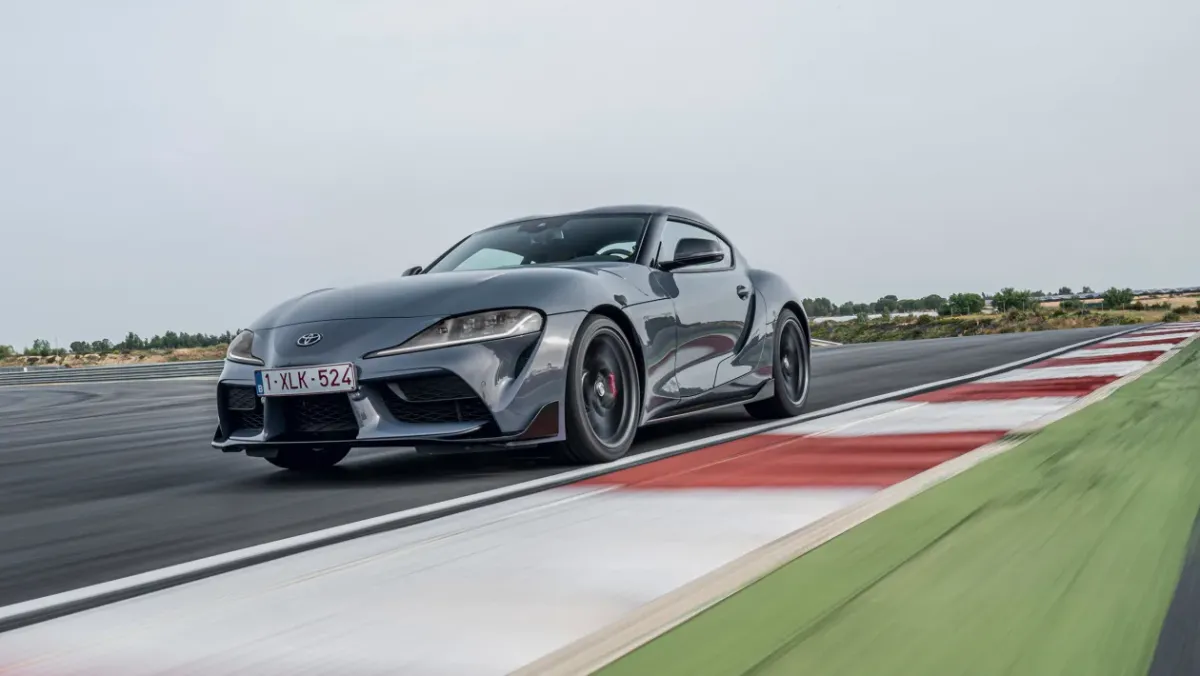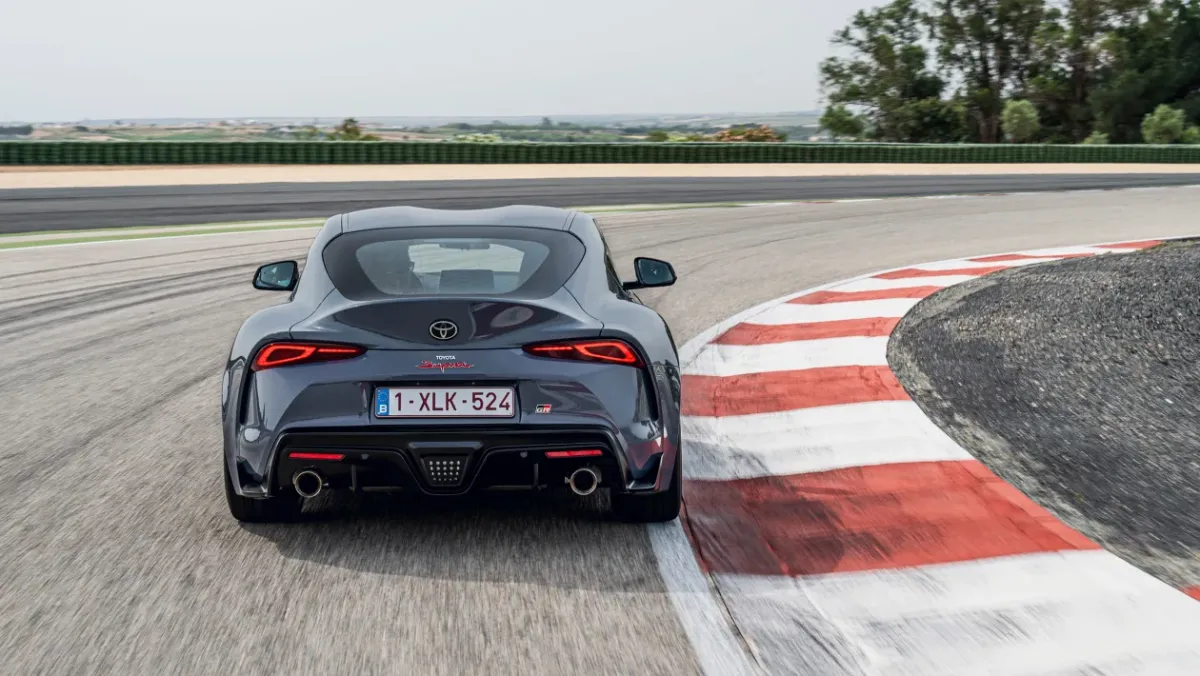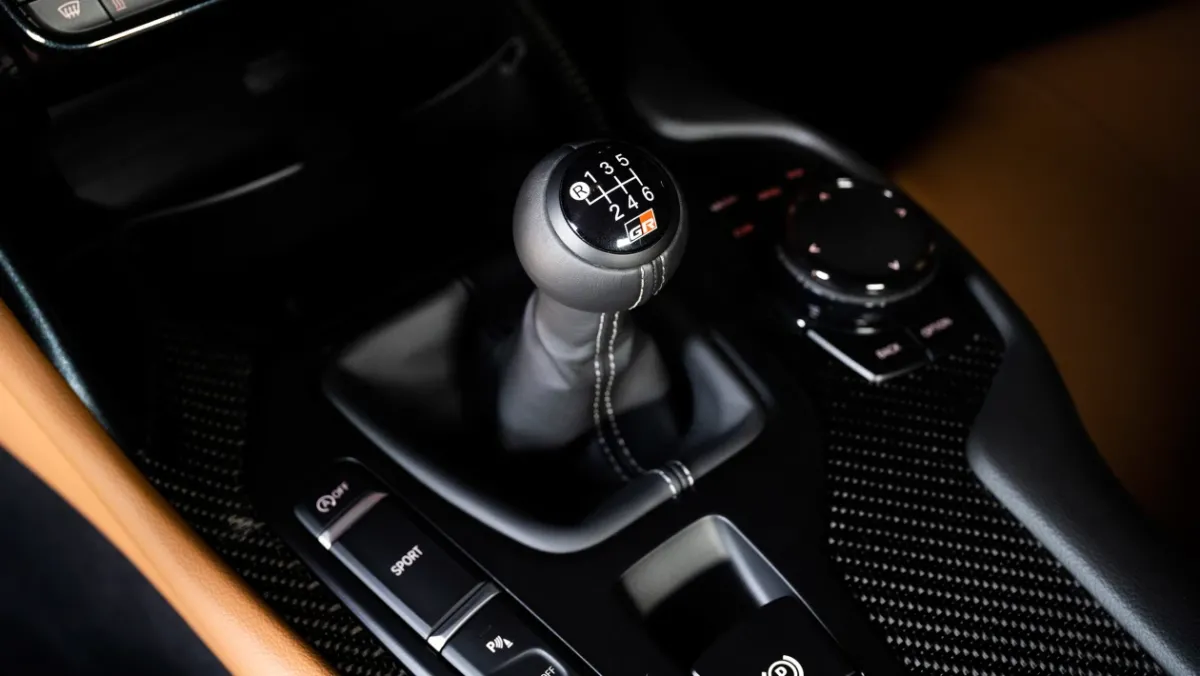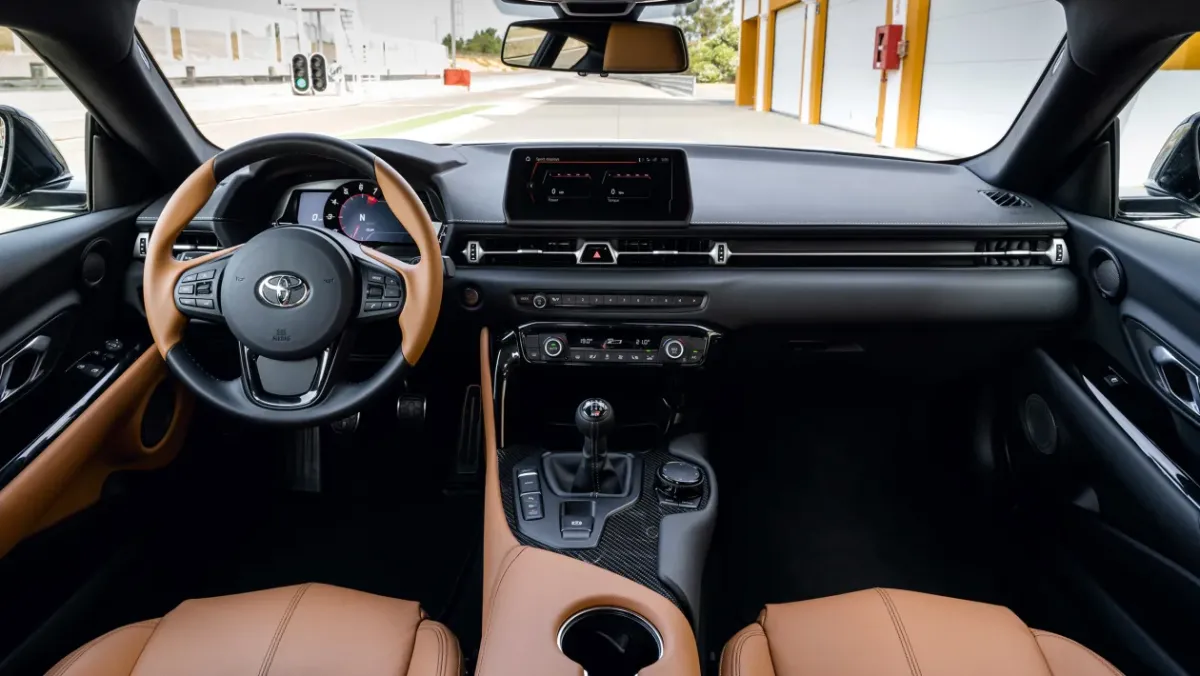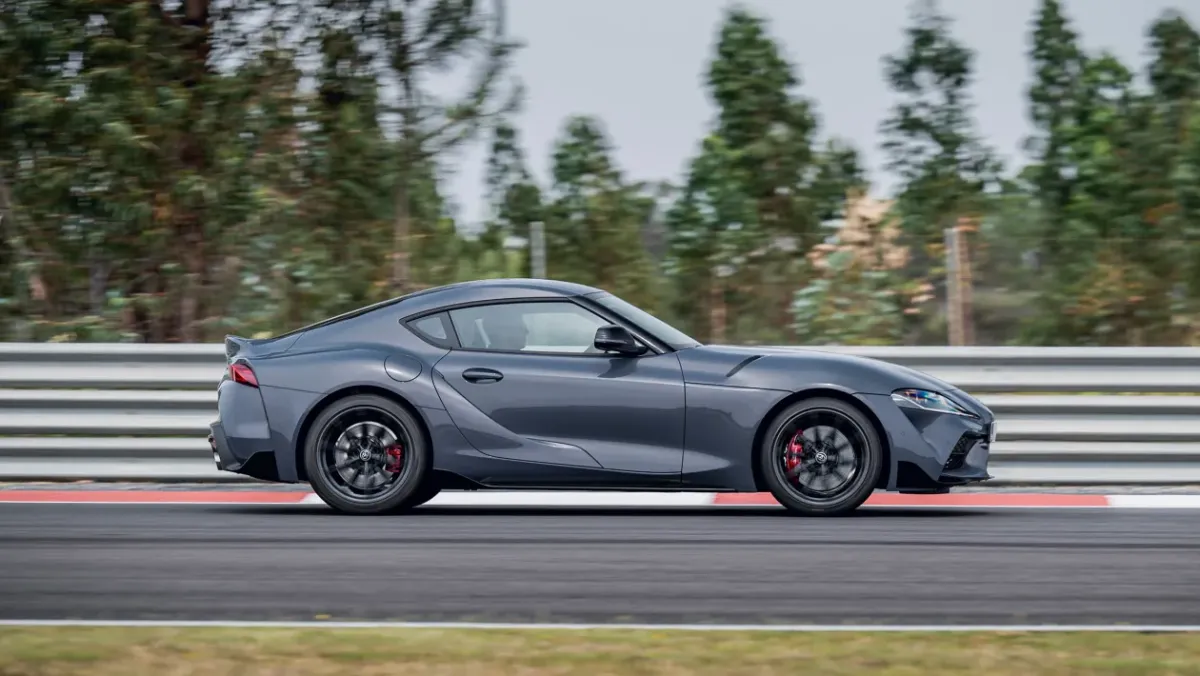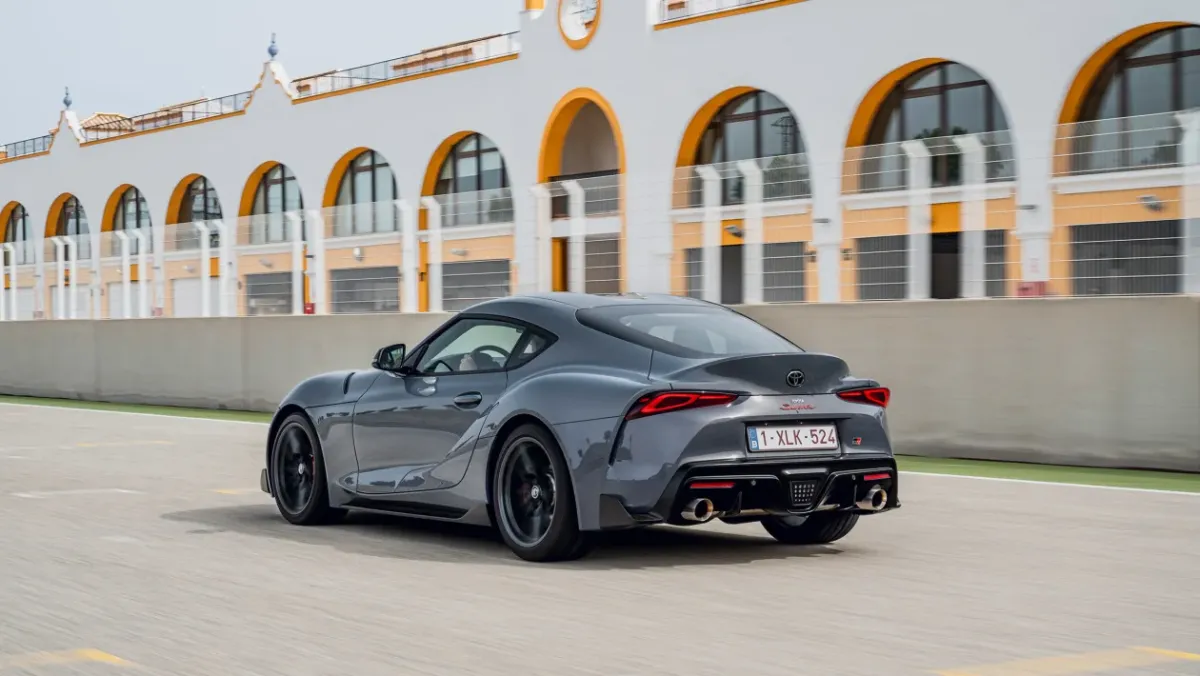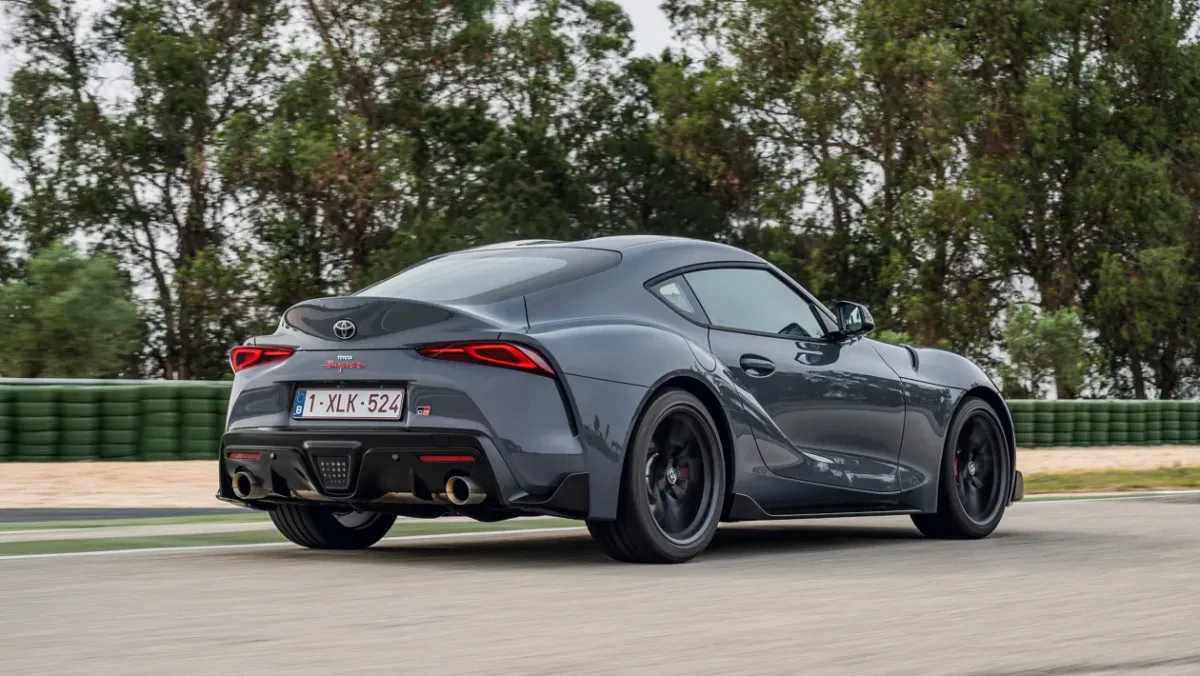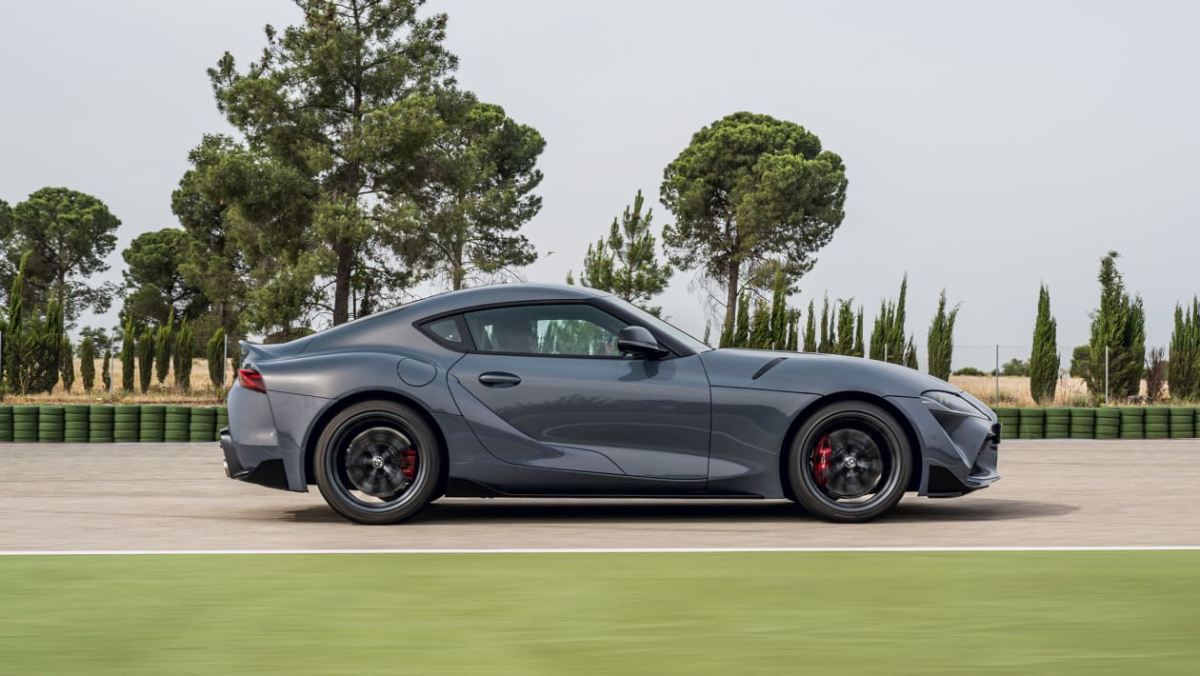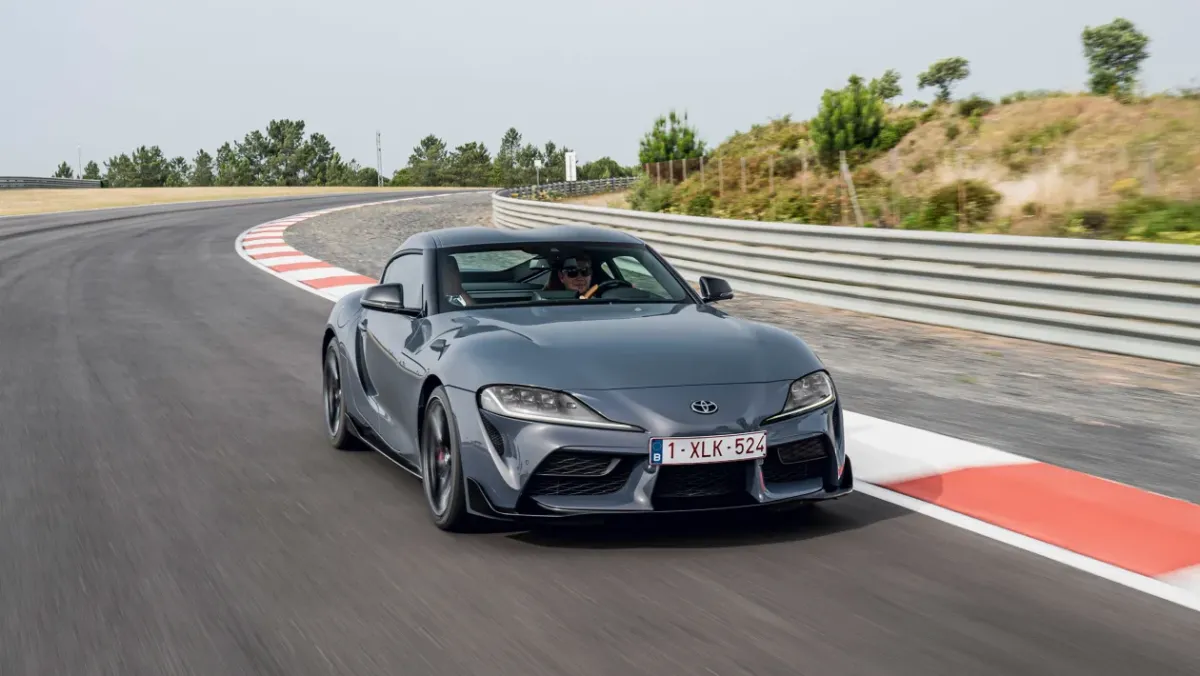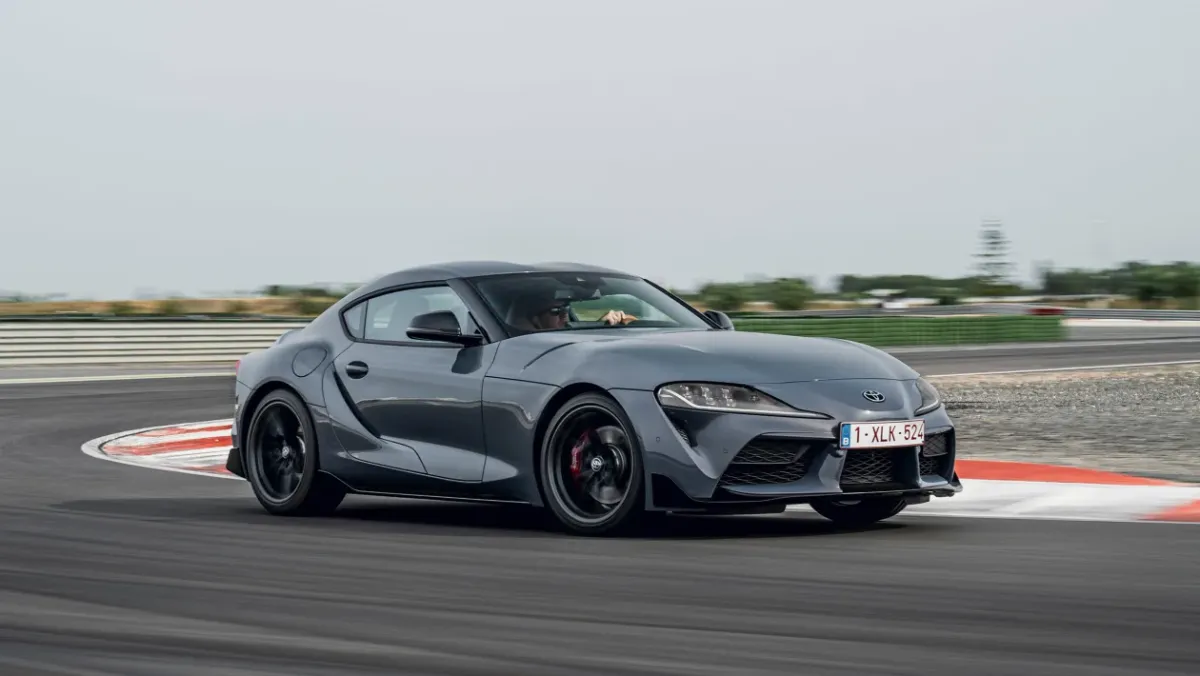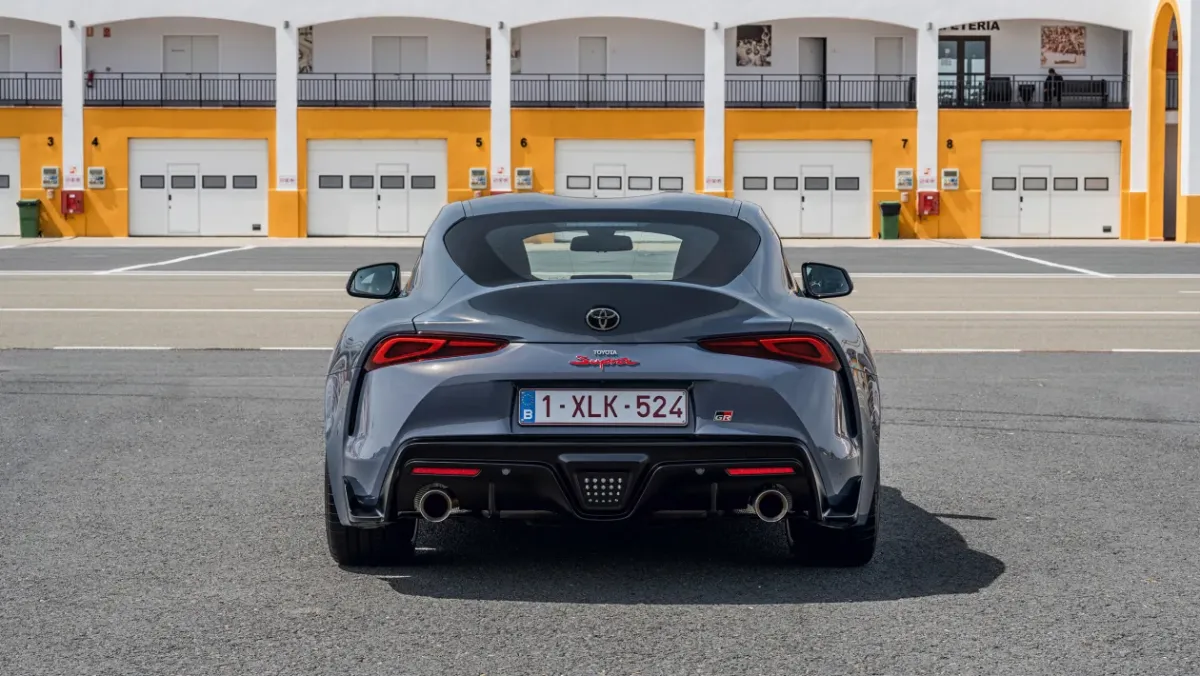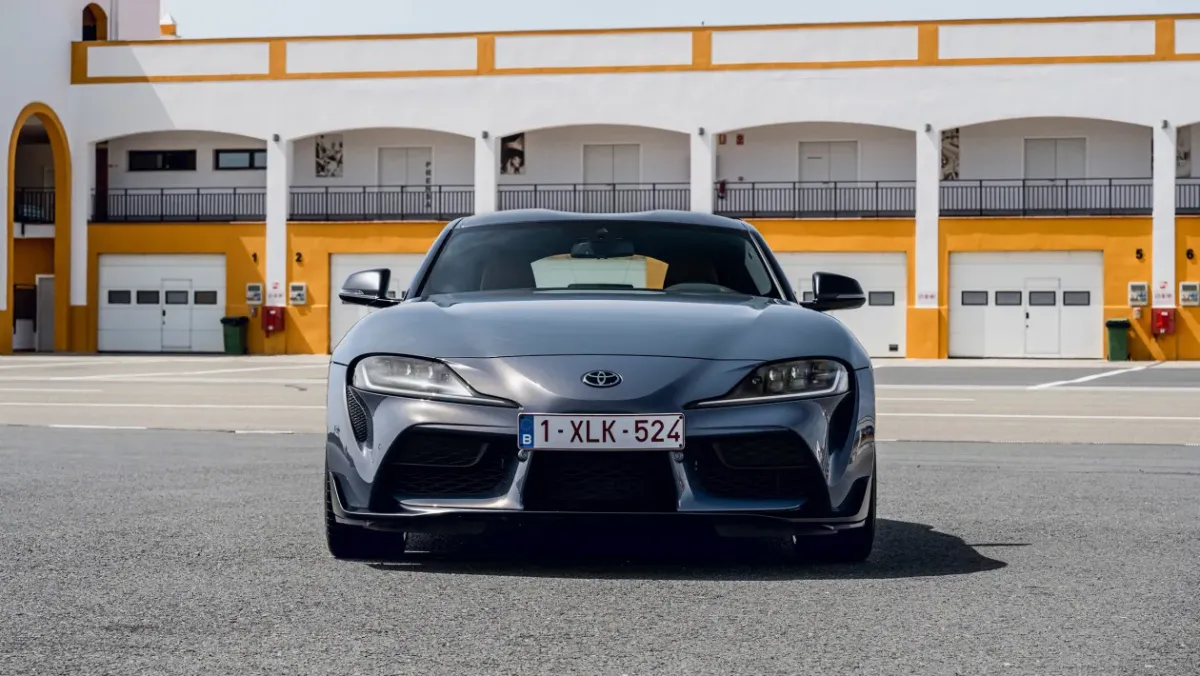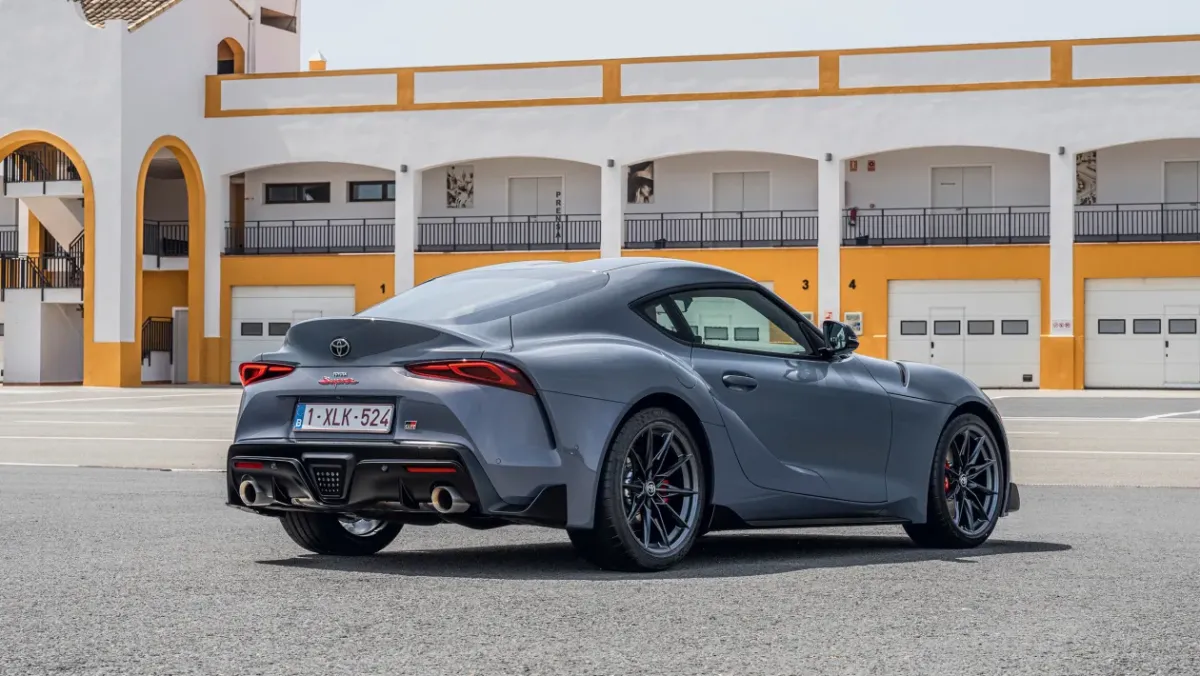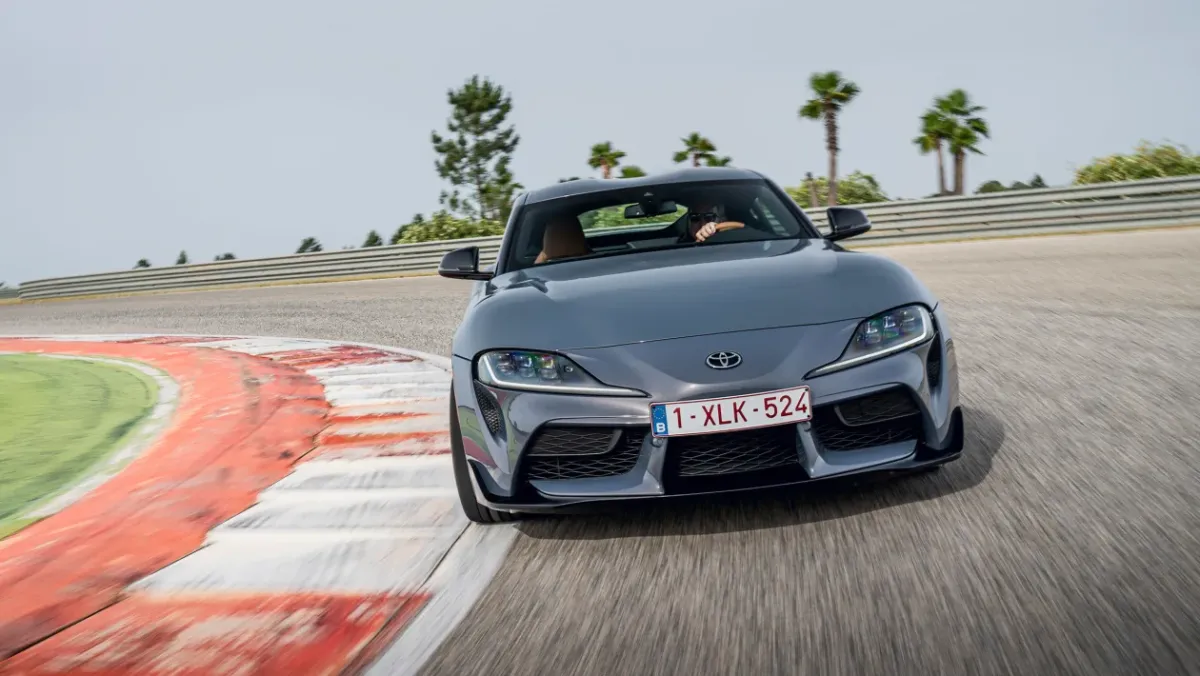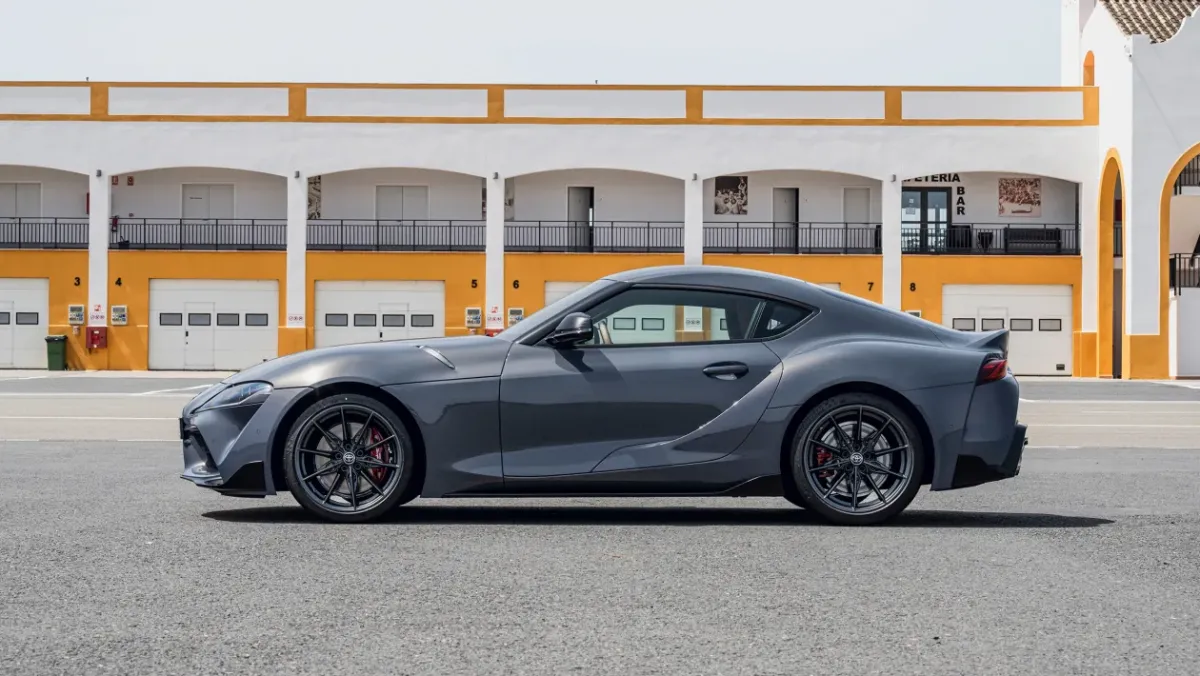Supra customers finally get what they’ve been asking for, but is it a change for the better?
| Fine gearbox, less weight and crisper handling | |
| Tough competition from rivals such as the Alpine A110, Porsche 718 Cayman GTS 4.0 and Lotus’s new Emira. |
It may have taken three years, but the pent-up demand for the GR Supra to connect more fully with its customers has finally been waved-through with the arrival of a manual transmission for the top rung six-cylinder, 335bhp 3-litre version. Toyota says the new 6-speed ‘box has been tailored around the torquey turbocharged six-pot powertrain it shares with BMW’s Z4 which is why the 254bhp 2-litre, four-cylinder base model continues as an auto only. Even so, it isn’t left out completely as Toyota has grabbed the opportunity to ‘re-tune’ the suspension across the range with stiffer vulcanised rubber bushes front and rear and recalibrated dampers and power steering.
Like the manual ‘box in the GR Yaris, the Supra’s has an ‘intelligent’ software package (iMT) designed to react to a more assertive driving style by optimising engine torque on upshifts at the moment of clutch engagement and release and, yep, matching revs on downshifts, too. On firing up, iMT is set as the default but it can be switched out in Sport mode. Either way, fat gobs of torque are heading the way of the clutch which has accordingly been equipped with a large friction area and strong diaphragm spring to take the strain.
Compensating for having two fewer ratios than the 8-speed auto and to ensure a comparably brisk step-off from rest, the final drive has been dropped from the automatic’s 3.15 to 3.46, though the automatic GR Supra is still fractionally quicker to 100kph at 4.3sec to the manual’s 4.6sec. Both versions’ top speeds are electronically pegged to 250kph.
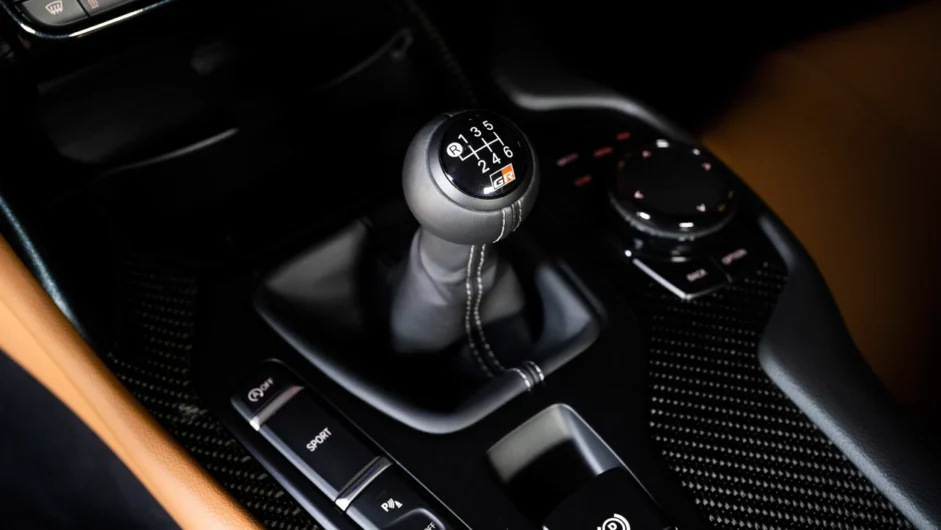
To accommodate the new gear lever and give it room to manoeuvre, the centre console, a structure of some size, had to be redesigned to ensure sufficient air between the gearknob in 1st, 3rd and 5th and the air conditioning control panel. The engineers ended up with 43mm of clearance if you’re interested. As for the knob itself, it plays its part in the quality of the shift, starting out as a lighter item but incrementally putting on weight to overcome a hint of stickiness in the action until, at 200 grams, it was felt to have the optimum ‘inertia effect’ as well as feeling snug in the palm.
Not that granting the GR Supra its manual transmission was anything like as straightforward. With nothing oven ready in the Toyota transmission parts bin that could cope with the 3.0-litre Supra’s 369lb ft, the engineering team cherry picked the components they needed to tailor a manual six-speeder that would suit the Supra’s muscular mien. In the initial stages the project modified the existing transmission housing, driveshaft and gear set while jettisoning other elements to save weight, the deletion of the ‘acoustic package’ and resulting small increase in transmission whine considered acceptable given the more sporting context.
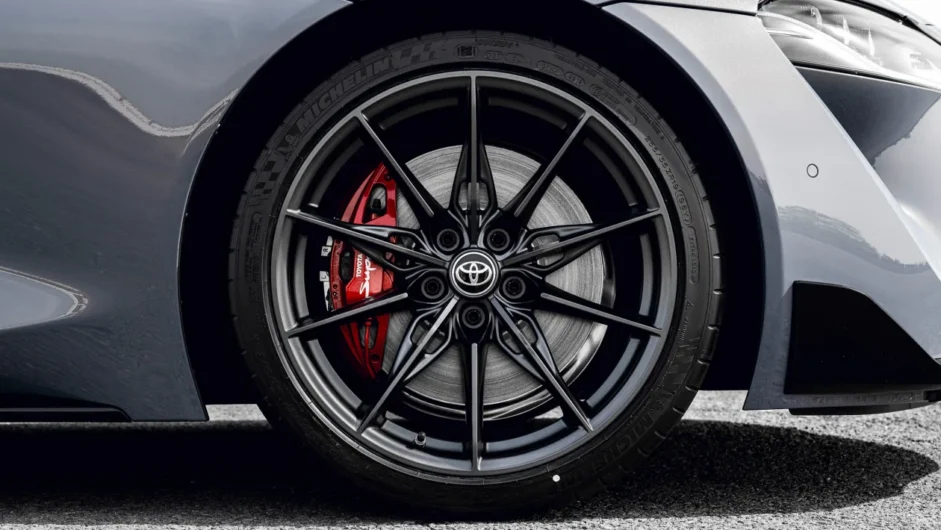
With the sportier – potentially snappier – set-up, the vehicle stability control (VSC) is teamed with an anti-roll programme (ARP) to step in earlier and quell any sudden lift-off oversteer for both manual and auto if left on. Specific to the manual, though, the traction control (TRC) has been tweaked to smooth out the jarring inputs possible with a manual clutch but, in Track mode, still permit some nursery slope level drifting.
This promises to be a more enticing prospect than before as the manual, in $62,635 standard trim, weighs a useful 38.3kg less than the previous automatic model. As well as the lighter transmission, new 19-inch alloys, a slimmed down (10-speaker) audio system and losing the seats’ leather upholstery, power adjustment and lumbar support have helped shed the kilos. But for those less keen on lean, there’s always the $65,565 Pro version which reinstates the power-adjustable seats with leather upholstery, 12-speaker JBL audio system and adds a head-up display and LED dual-beam headlights into the bargain.
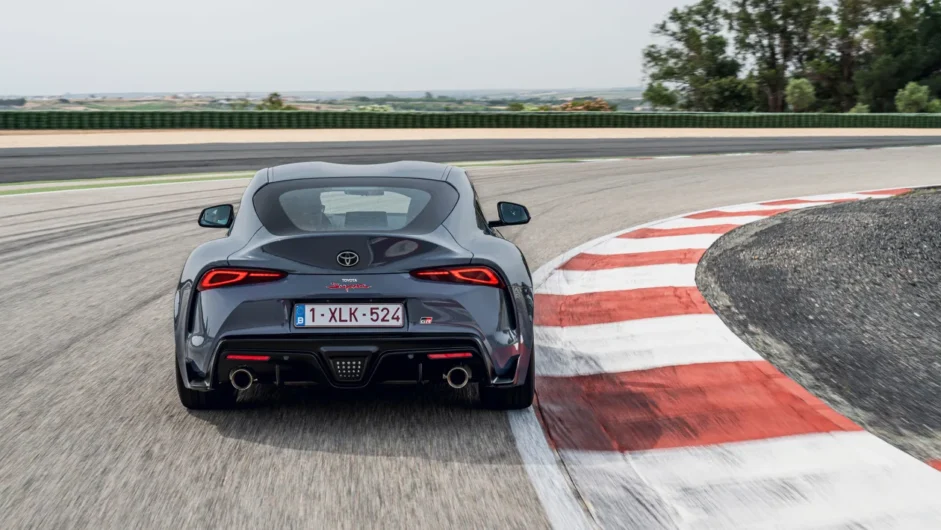
Regrettably, there’s no chance to try the GR Supra MT on the wonderful roads west of Seville and three laps of Spain’s Monteblanco circuit in each version isn’t so much a deep dive into the GR Supra’s newly minted assets as a 30 second high-pressure cold shower. Bracing nonetheless and it sorts out a few things. First, and despite the rather small windows, the BMW-infused cabin is as pleasant a place to be as ever, the new centre console putting the stubby gearlever and its 200g knob in exactly the right place with no danger of punching the air conditioning controls. Second, accelerating hard out of the pit lane, the gearbox is reliable ally, treating road-tester grade aggression and great slabs of torque flung at the rear wheels with nary a flinch, the iMT software cushioning the chassis from even the punchiest Top Gun: Maverick style inputs. Shift quality is robust and positive rather than slick and speedy but it isn’t sticky and it doesn’t baulk. The medium-weight clutch is all sweetness, too.
With the electronic stability and traction aids doing their thing, there’s a pretty fool-proof fusion of grunt and grace, the lighter and slightly lither GR Supra serving up lots of grip and disguising its weight effectively through the turns, if less so under heavy braking. While not brimming with feel, the steering is direct and accurate, turn-in tenacity something you can really lean on and jumping back on the gas early post-apex causes no grief. Neither, for the most part, does dialling down the nanny intervention, though a smooth approach is definitely the way to go and finessing balance with helm, throttle and brake a more rewarding policy than trying to flambe the rear tyres.
The GR Supra transformed? To a subtle degree. Good enough to put the bite on a Cayman? Not quite. A welcome attitude adjustment all the same.
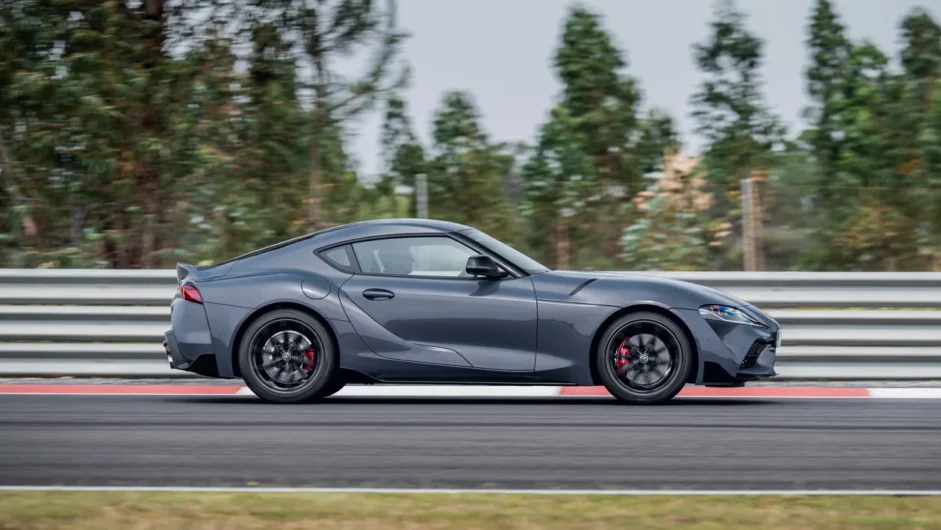
Prices and rivals
Toyota’s existing GR Supra range in the UK was recently reduced to just the ‘Pro’ versions at $57,955 and $67,320 for the 2.0 and 3.0 models, but along with the MY23 changes that come alongside the Manual’s introduction, we could once again see the full range reintroduced. As mentioned above, the 6MT starts at $62,635 for the base car, and $64,980 for the Pro – a $2340 reduction on the existing automatic.
At this price point, it comes as a little of a shock to see the variety of sports car rivals that persist despite the doom and gloom associated with the future of the sports car. As such, if you want something smaller, lighter and more French, the Alpine A110 is available from $58,530, or around $11k more for the more potent GT and S models. Lotus’s $70,250 Emira will be available from Spring 2023 after the initial batch of First Edition cars were sold through, while Audi’s TT RS is another option from $70,280.
But the Supra’s biggest issue comes from Stuttgart, where the evergreen Porsche 718 Cayman offers its magic at varying price points. The entry-level four-cylinder models migh lack a brilliant engine, but offer an unmatched driving experience. From $80,000 (an admittedly big jump over the Supra) the GTS 4.0 is the real superstar though, matching those superb handling traits to a stunning naturally aspirated six-cylinder motor.
Toyota GR Supra MT specs
| Engine | In-line 6-cyl, 2998cc, turbocharged |
| Power | 335bhp @ 5000-6500rpm |
| Torque | 369lb ft @ 1600-4500rpm |
| Weight | 1577kg |
| 0-100kph | 4.6sec |
| Top speed | 250kph limited |
This article originally appeared at evo.co.uk
Copyright © evo UK, Autovia Publishing

